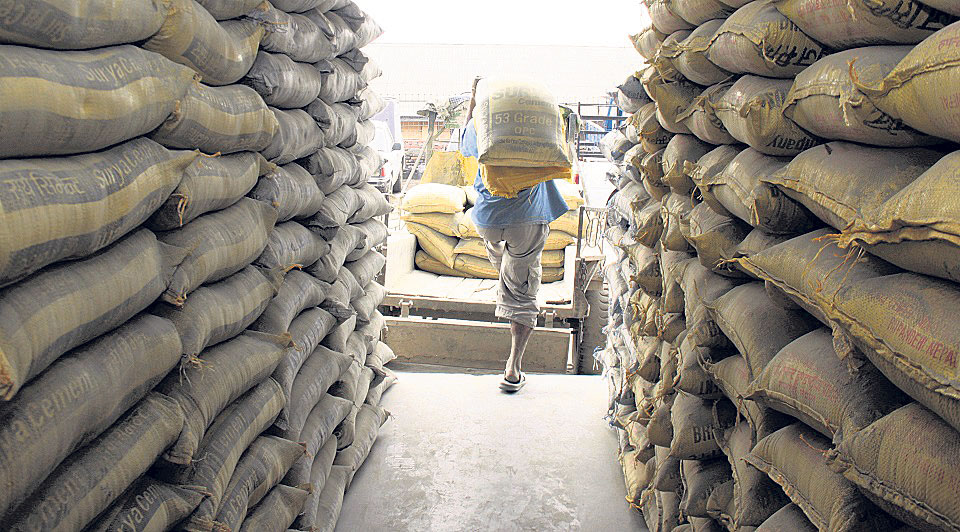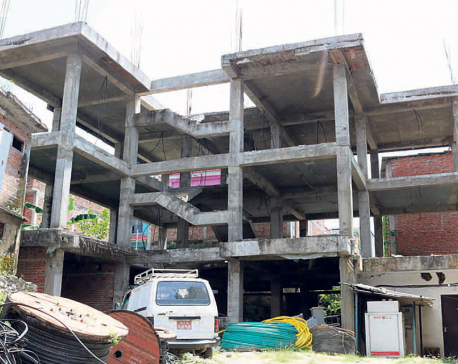
OR
New standards for cement, AAC blocks
Published On: January 19, 2020 11:01 AM NPT

The government has classified cement into 33, 43 and 53 grades while fixing compressive strength of 3 Newton per sq mm for AAC blocks
KATHMANDU, Jan 19: The government has enforced new standards for locally produced cement and concrete blocks in a bid to ensure the quality of the construction materials.
As per the new regulations, Nepali cement is now classified into 33, 43 and 53 grades like international products. “From now on, all Nepali cement should receive a minimum of 33 grades while high-quality products are classified under 43 and 53 grades according to their binding strength,” the Director General of Nepal Bureau of Standards & Metrology (NBSM), Bishwo Babu Pudasaini told Republica.
Currently, most of the cement manufactured in the country is of 33 mega pascal grade, according to the bureau. Pudasaini said the the Ordinary Portland Cement in grade 43 mega pascal should have binding strength of 35% more than the 33 grade cement. Likewise, the cement in 53 mega pascal grade should ensure 70% more binding capacity than the ones being used traditionally. According to Pudasaini, the new standards of the construction material have been endorsed by the Ministry of Industry, Commerce and Supplies on Friday.
Pudasaini said that the government in its new regulation has also maintained the insoluble residue limit at 2%, giving continuity to the old threshold in Nepali cement. Limestone, an essential raw material of cement, found in many parts of the country is reported to contain large amount of the insoluble materials. The cement manufacturers have been demanding that the government revise the limit of insoluble materials citing that they have to bear heavy costs for extracting the materials.
Recently, the bureau had moved to raise the limit to 4%, following the pressure from the private sector. But the Parliamentary Public Accounts Committee meeting held on December 23 had asked the government to maintain the insoluble residue limit at lower side, stating that the high amount of the insoluble residue will degrade the quality of the construction material.
According to the Cement Manufacturers Association, there are around 61 cement factories operating in the country. The new government standards are expected to regulate the cement quality at a time the country is heading to be self-reliant in the construction material.
The ministry has also enforced new regulations in the autoclaved aerated concrete (AAC) block that is being used as an alternative to clay based brick in wall construction. According to the bureau, there are around six factories manufacturing the AAC blocks, which are doing their business in any set standards for their products.
Pudasaini said that the blocks should meet the government prescribed criteria in terms of their dimensions, compression strength, insulation parameter and density.
“The product should have compression strength of 3 Newton per sq mm while its density should be in the range of 550-1,000 kg per cubic meter,” said Pudasaini, adding that the regulations have also prescribed the quality of sand and the ratio of cement and sand to prepare the AAC blocks.
According to the bureau, AAC block is the low density construction material prepared through the high pressure mechanism. The concrete block features good insulation system helpful in regulating room temperature, assists the earthquake resistant structure and comes at 10%-20% less cost than the clay based bricks. “The new standards could help ensure the quality of the concrete block that is gaining popularity in construction work in the country,” Pudasaini said.
You May Like This

Nepal Rastra Bank turns flexible on home loans for first-time home buyers
KATHMANDU, Mar 4: The Nepal Rastra Bank (NRB) has softened its lending limit for first-time homebuyers giving respite to the... Read More...

NBSM bars three iron bar manufacturers from selling their products
KATHMANDU, Feb 8: The Nepal Bureau of Standards and Metrology (NBSM) has barred three iron bar manufacturers from selling their... Read More...

Six years on, NT building awaits completion
DHADING, Jan 9: Construction materials are left scattered around the premises. The building has been raised to three floors for... Read More...





Just In
- MoHP cautions docs working in govt hospitals not to work in private ones
- Over 400,000 tourists visited Mustang by road last year
- 19 hydropower projects to be showcased at investment summit
- Global oil and gold prices surge as Israel retaliates against Iran
- Sajha Yatayat cancels CEO appointment process for lack of candidates
- Govt padlocks Nepal Scouts’ property illegally occupied by NC lawmaker Deepak Khadka
- FWEAN meets with President Paudel to solicit support for women entrepreneurship
- Koshi provincial assembly passes resolution motion calling for special session by majority votes






_20220508065243.jpg)






Leave A Comment